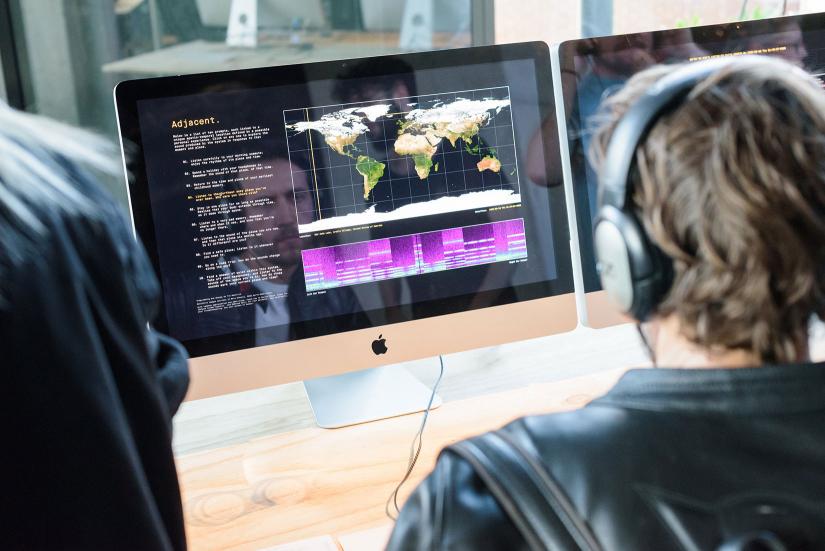Design is technology
How can technology improve our lives? How can we improve the ways we use it? Can coding be combined with creativity?
We believe that designers have a critical role to play in answering these questions. At UTS you’ll find product designers engaging with new fabrication technologies such as additive, or 3D, printing and coders designing digital interfaces. You’ll discover new ways to visualise big data or develop an app that could arrest Australia’s decline in STEM students.
The bottom line is that if you love using, adapting or developing technology, then design might just be the right calling for you.
Meet some of our students and read their stories to find out how they are using technology as part of their design practice.
Creating data sonification
Tim Busuttil may have had majored in arts and illustration at high school but by the time he finished his Bachelor of Design in Visual Communication he had discovered a love for problem solving, data and coding. His Honours project, Adjacent, an “emergent auditory spatio-temporal map”, took this to the next level. Find out how he hand-coded a system designed to transform place-based data into audio.
Using technology to disrupt fashion
Science, maths, fashion. It’s not a combination that you’d think of normally but for Dr Mark Liu, it’s one that is critical to the future of fashion. After realising that fashion designers spent all their time working in 2D, Mark developed Drape Measure, a device that can measure the human body in 3D. Find out how this Fashion and Textiles Graduate is set to revolutionise the industry thanks to his focus on science and math.

When I first started in the fashion industry, things were much more clear-cut.
You started a fashion label, you’d create a high-end fashion collection and then you’d go to Fashion Week, and then that was the greatest thing you could possibly achieve in high fashion, and that was it.
My work is rather disruptive to the way we look at science and to the way we look at fashion, because it builds a bridge between the two.
In nature, most shapes are curved and have complicated three-dimensional shapes.
If you look at a structure such as a tree, it has very complex geometry, and if you think about the human body it’s this moving, changing, constantly evolving thing.
This is a kind of geometry called non-Euclidean geometry, and fashion design was previously using the mathematics of flat surfaces, which is only one form of geometry, so we were missing the ability to map most of the curvature.
People sometimes get upset because they’re not a perfect size 10, or because they get fitted with a tape measure, and they come back and suddenly the garment doesn’t fit and they think there’s something wrong with them.
The theories that I developed, basically they can explain why things don’t fit all the time and how a lot of the time it isn’t actually our fault – it’s a systemic problem built into the fashion system.
I’m Mark Liu and I’m a fashion and textile designer.
“Most people seem to think of fashion as frivolous and anti-intellectual, but the future of cutting-edge fashion design will be based on pioneering scientific research. Fashion design is actually very technical and more related to maths and science than most people would think. You can’t have one without the other.”
How will you advance your passion for design and technology?

